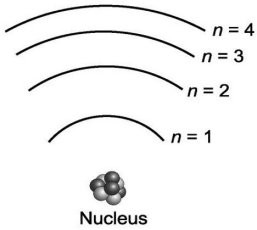The basic building block of all silicate minerals is the
A) silicate tetrahedron.
B) crystalline silicate sulfur.
C) silicate triangular structure.
D) silicate cleavage direction.
A
You might also like to view...
Consider the various frequencies of the three photons emitted from the following three individual electron transitions in the figure below: n = 3 to n = 2; n = 2 to n = 1; n = 3 to n = 1. These transitions would produce three spectral lines in a spectroscope. If the energy spacing between the levels were equal, would this affect the number of spectral lines?
A. Yes, two otherwise separate lines would converge into a single more intense line. B. No, but some would then require a prism in order to be seen. C. No, but the spacing between the spectral lines would change. D. Yes, two otherwise separate lines would converge into a single less intense line.
Some pollutants are able to persist in the environment for thousands of years
a. True b. False
Autotrophs that dwell in dark caves, wells, or on the ocean floor often depend on which of the following biogeochemical processes?
A) Chemosynthesis B) Photosynthesis C) Nitrogen fixing D) Nutrient leaching
Which of the following represent the reactants (ingredients) necessary for cellular respiration?
A) hydrogen sulfide, carbon dioxide, water B) carbon dioxide, water, and oxygen C) starch, enzymes D) glucose and oxygen